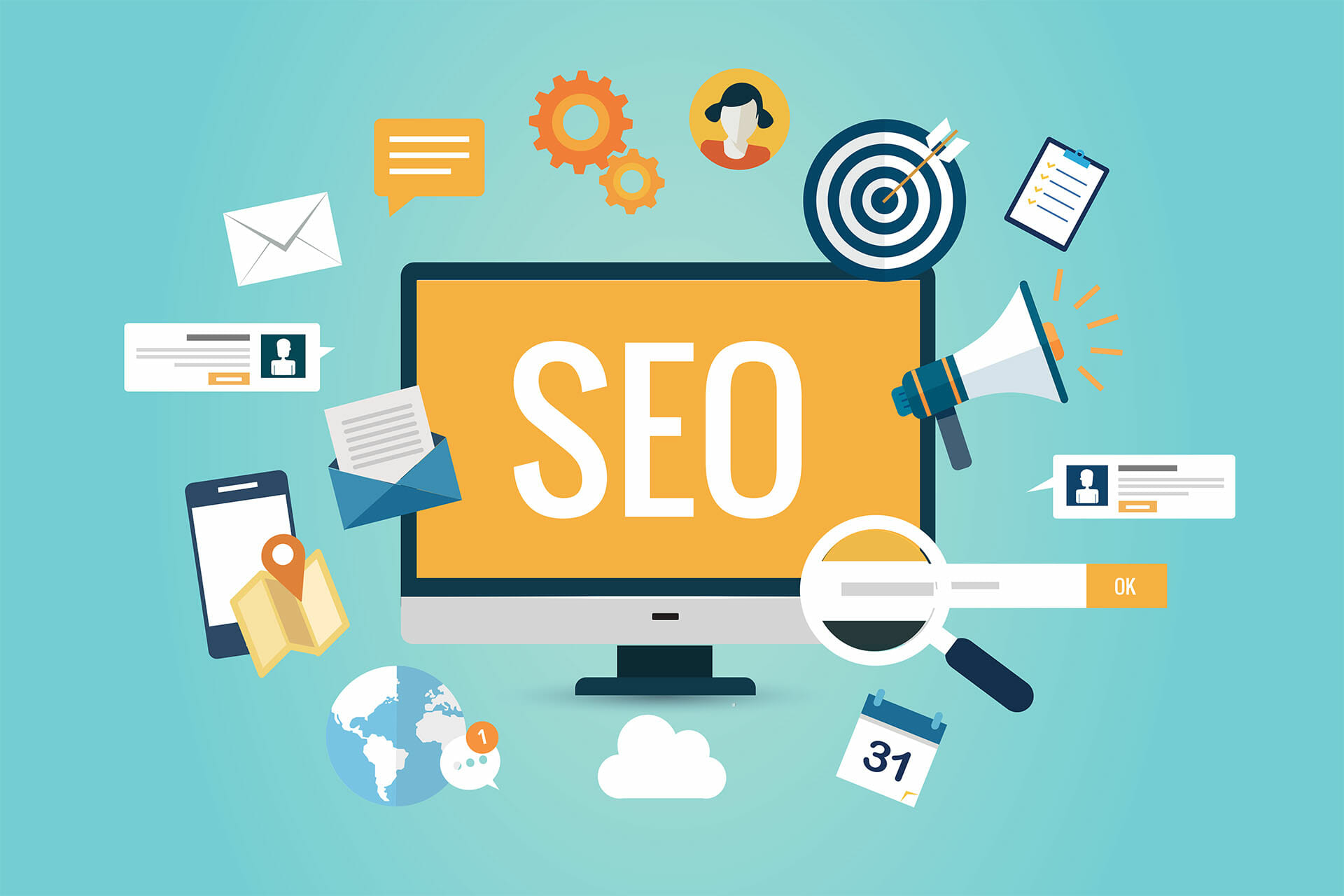In the competitive digital world of today, businesses in The Woodlands, Texas, must leverage every opportunity to stand out, and on-page SEO is one of the most powerful tools they can use. Whether you run a small business offering local services or a large enterprise targeting regional customers, investing in on-page SEO is essential for your success. On-page SEO directly influences how well your website performs in search engine rankings and how users interact with your site.
On-page SEO is the set of strategies and tactics you apply directly on your website to enhance its visibility and relevance in search engine results pages (SERPs). Search engines like Google reward websites that offer valuable content, a user-friendly experience, and a clear structure. Local businesses, in particular, can benefit from on-page SEO since it ensures your site appears prominently when customers search for relevant local services in The Woodlands.
This article provides a detailed overview of what on-page SEO services in The Woodlands entail, focusing on key strategies that businesses can use to boost their local SEO rankings and ultimately attract more customers.
In addition to serving local businesses, we also specialize in providing on-page SEO services for high-growth industries such as Seo for Forex, Fintech, and Crypto. These fast-evolving sectors require a deep understanding of both search engine algorithms and industry-specific regulations. Our team has experience crafting SEO strategies that not only drive targeted traffic but also establish authority and trust in competitive digital environments. Whether you’re launching a new trading platform, promoting a blockchain solution, or scaling a financial technology product, we tailor our SEO approach to meet the unique demands of these industries.

What Is On-Page SEO?
On-page SEO refers to the actions you take on your website to optimize its content and structure to improve its ranking in search engine results. Unlike off-page SEO, which involves activities like link building and social media engagement, on-page SEO focuses on elements within your website that search engines use to assess relevance, usability, and overall quality.
On-Page SEO vs. Off-Page SEO
While on-page SEO is about optimizing the content and technical aspects of your website, off-page SEO revolves around external factors that influence your website’s authority and reputation. On-page SEO includes techniques such as content optimization, keyword usage, internal linking, and meta tag optimization. Off-page SEO includes backlinks, social media presence, and brand mentions from other websites.
Why On-Page SEO Is Crucial for Businesses in The Woodlands
On-page SEO plays a crucial role in ranking your website higher in local search results. For businesses in The Woodlands, where the local market is competitive, a well-optimized website increases your chances of ranking higher for relevant keywords, attracting more potential customers. Optimizing your website’s content, structure, and technical elements ensures that search engines can understand your website and serve it to the right audience.
Key Elements of On-Page SEO Services
Keyword Research and Optimization
One of the most foundational aspects of on-page SEO is keyword research and optimization. Keywords are the terms or phrases that potential customers use when searching for services or products related to your business. Identifying the right keywords is essential to ensuring that your website ranks for the right queries.
For businesses in The Woodlands, it’s important to focus on localized keywords—terms that include geographic modifiers like “The Woodlands,” “Woodlands,” or “Houston.” A professional SEO company The Woodlands will conduct keyword research to identify these terms and integrate them into your website’s content in a natural and effective manner.
How Keyword Optimization Works
Once the relevant keywords are identified, they must be strategically placed throughout your website. This includes the title tags, meta descriptions, header tags (H1, H2, etc.), image alt text, and within the body content. Each page on your website should focus on specific keywords related to the services or products you offer.
Example: If you run a landscaping business in The Woodlands, your target keyword might be “best landscaping services in The Woodlands.” By incorporating this phrase into your homepage title tag, headers, and content, your website will be more likely to rank higher for local searches related to landscaping services.
Title Tags and Meta Descriptions
Title tags and meta descriptions are vital for on-page SEO because they provide both search engines and users with a preview of your page content. Optimizing these elements can directly improve your click-through rates (CTR) from search engine results, which in turn can lead to higher rankings.
Title Tags are the clickable headings that appear in search engine results. They should include your target keyword and provide a concise description of what the page is about. Keep your title tags under 60 characters to ensure they display fully in search results.
Meta Descriptions are short snippets (about 160 characters) that provide more detail about the content of the page. They appear under the title tag in search results and help users decide whether to click on your link. While meta descriptions don’t directly affect rankings, they do influence user behavior, which is a ranking factor for Google.
Example:
- Title Tag: “Top Landscaping Services in The Woodlands – Professional Lawn Care”
- Meta Description: “Looking for professional landscaping services in The Woodlands? Get the best lawn care services at affordable prices with our expert team.”

Header Tags and Content Structure
Header tags (H1, H2, H3, etc.) organize the content of your webpage into readable sections and help search engines understand the structure and relevance of your content. Using header tags properly makes your content easier to read for both users and search engines.
- H1: This is your main heading, usually the title of the page, and it should contain your primary keyword.
- H2: These are subheadings that help organize your content into smaller, digestible sections.
- H3: These are used for further subsections within the H2 sections.
By using header tags effectively, you make it easier for search engines to crawl and understand your content. Header tags also contribute to a better user experience by making the content more scannable.
Example:
- H1: “Best Landscaping Services in The Woodlands”
- H2: “Why Choose Us for Lawn Care?”
- H3: “Our Services Include Tree Trimming, Lawn Maintenance, and More”
Content Quality and Relevance
Creating high-quality, informative, and engaging content is a key aspect of on-page SEO. Content is the foundation of SEO because it directly influences how your website ranks for specific keywords. But more importantly, the quality of your content affects how users engage with your site.
Your content should provide real value to your audience. For local businesses in The Woodlands, this means creating content that resonates with local users. Discuss local trends, use local statistics, and reference services that cater to the unique needs of customers in the area.
Keyword Density: When it comes to keyword optimization, it’s important to find the right balance. While it’s necessary to include your target keywords throughout the content, keyword stuffing (overloading your content with keywords) can negatively affect readability and SEO rankings. Write naturally, and focus on offering helpful, well-researched content.
Internal Linking
Internal linking refers to linking one page of your website to another. It helps with site navigation, spreads link equity across your site, and allows search engines to crawl your website more efficiently.
An effective internal linking strategy ensures that visitors can easily find related content, and it encourages them to spend more time on your site. This reduces your bounce rate and improves user engagement, which are key SEO signals.
Example: On your homepage about landscaping services, you could link to specific service pages such as tree trimming, lawn care, and irrigation. These links should provide additional value to the user and lead them to relevant content on your website.

Image Optimization
Images are essential for enhancing the visual appeal of your website, but they can also slow down page loading times if not optimized properly. Image optimization involves reducing file sizes without sacrificing image quality to ensure your pages load quickly.
Additionally, you should use descriptive alt text for each image. Alt text helps search engines understand what the image is about and can also improve your rankings in image search results.
Benefits of Image Optimization:
- Faster loading times, leading to improved user experience and SEO rankings.
- Alt text that boosts image SEO and accessibility.
- Better page performance on mobile devices, which is critical for local SEO.
URL Structure and SEO-Friendly URLs
An SEO-friendly URL structure is crucial for both user experience and search engine rankings. Short, clean, and descriptive URLs are easier for search engines to crawl and more memorable for users.
Good URL practices include:
- Including keywords that are relevant to the page.
- Keeping URLs short and descriptive (avoid long strings of numbers or special characters).
- Using hyphens to separate words (instead of underscores).
Example:
- Good URL: “/landscaping-services-the-woodlands”
- Bad URL: “/page-id=12345”
Mobile Optimization and Responsiveness
With the rise in mobile usage, mobile optimization has become a must for all websites. Google’s mobile-first indexing means that Google now prioritizes the mobile version of your website for ranking purposes.
A responsive design ensures that your website adapts to any screen size, providing an optimal viewing experience for users across devices. Google also rewards responsive sites with higher rankings because they improve the overall user experience.
The Necessity of Mobile Optimization for Local SEO
Since most local searches are conducted on mobile devices, having a mobile-friendly website is crucial for businesses in The Woodlands. Mobile optimization not only helps with SEO but also increases the chances of converting local users into customers.
Advanced On-Page SEO Tactics
Schema Markup
Schema markup is a type of structured data that helps search engines understand the content of your website more clearly. For local businesses in The Woodlands, schema markup can be particularly useful for improving local SEO.
By using schema markup, you can highlight important information like your business name, address, phone number, customer reviews, and services, directly in the search engine results. This can lead to enhanced visibility and more clicks.
Example of Local Business Schema:
- Address: 123 Main St, The Woodlands, TX 77380
- Phone Number: (123) 456-7890
Review Rating: 4.5 stars based on 50 reviews
Page Speed Optimization
Page speed is a critical factor in both user experience and SEO. Slow-loading pages result in higher bounce rates and reduced user engagement, which negatively impacts your rankings. There are several techniques for improving page load times, including image compression, reducing server response times, and minifying CSS and JavaScript files.
User Experience (UX) Signals
Google uses various UX signals, like time spent on site and bounce rate, to assess the quality of your website. A well-designed site with easy navigation will encourage users to explore more pages, improving these metrics and boosting your SEO.
To optimize for user experience, make sure your website is easy to navigate, visually appealing, and provides clear calls to action.

Why On-Page SEO Matters in The Woodlands
The local market in The Woodlands is highly competitive, and businesses need to do everything they can to stand out. On-page SEO plays a key role in helping businesses rank higher in local search results, attract more customers, and increase conversions.
Effective on-page SEO leads to better rankings, more traffic, and higher engagement, resulting in a stronger online presence and higher revenue for businesses in The Woodlands.
How to Choose an On-Page SEO Service Provider in The Woodlands
Choosing the right SEO company is essential for the success of your on-page SEO strategy. Look for a company with experience in local SEO, a transparent approach, and a proven track record of success. Be sure to ask about their strategies for keyword optimization, content creation, and page speed optimization.
Red Flags to Avoid
- Unrealistic promises (e.g., “We’ll get you to #1 in Google within a week”).
- Lack of transparency in their SEO practices.
- No clear communication or reporting structure.
Conclusion
On-page SEO is an essential part of any local SEO strategy. By focusing on keyword optimization, content quality, and technical SEO, businesses in The Woodlands can improve their website rankings and attract more local customers. Investing in on-page SEO services will provide long-term benefits, including better user engagement, higher search engine rankings, and increased conversions.
If you’re ready to boost your business’s online presence and take your local SEO to the next level, partnering with an expert SEO company in The Woodlands is the best way to get started.
We are supported by our audience. When you purchase through links on our site, we may earn an affiliate commission at no extra cost to you.
Our newsletter
* We will never send you spam or share your email with third parties












